
In 1988, an earthquake devastated northern Armenia, destroying towns and cities and killing at least 25,000. In Gyumri, Armenia’s second-largest city, the impacts of the tragedy are still felt by Haykuhi Galstyan and her husband over 30 years later.
Haykuhi Galstyan is nothing if not resilient. With an energy belying her age, the 63-year-old runs a bustling tailor’s workshop from the small home she shares with her husband, Volodya Sargsyan.
Cheerful and hard-working, Galstyan gives no indication that she has spent much of her life working tirelessly to support herself and her husband as the city she grew up in crumbled around her; damaged first by a natural disaster, and later, by degradation and poverty.
Born and raised in Gyumri, Galstyan started working in 1975.
‘I failed to enter university after graduating from school. My father decided to take me to a tailor’s workshop as an apprentice, and that’s how my journey began.’
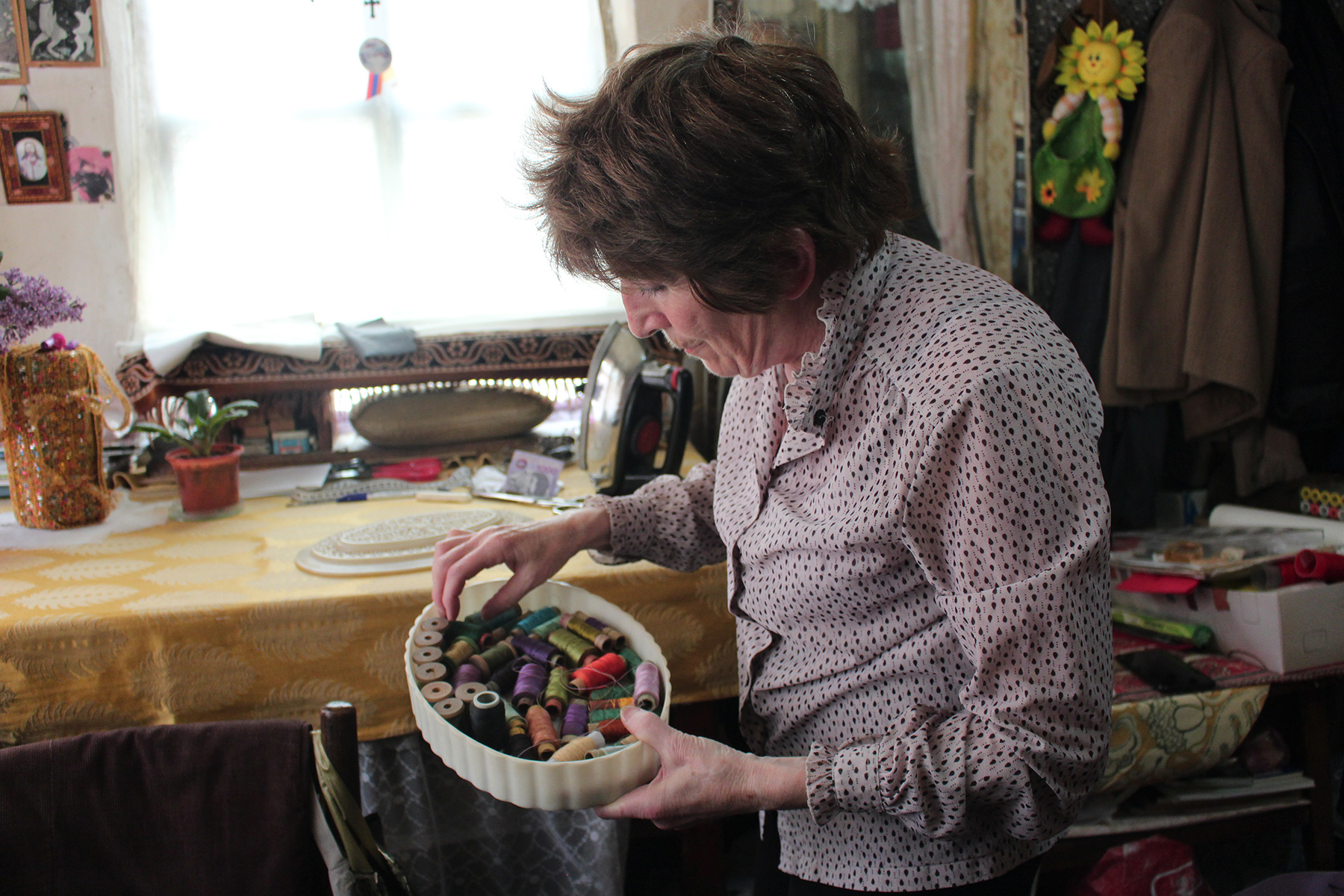
At the time, Gyumri was a major industrial centre, famous for having a large number of tailor’s workshops or ‘ateliers’.
Galstyan was lucky — she spent 18 years working at the atelier that her father had taken her to.
Many others were less fortunate. A decade after she began working, an earthquake laid waste to northern Armenia, killing between 25,000 and 50,000, levelling the town of Spitak, and destroying many of Gyumri’s ateliers. Galstyan’s workplace was one of the few that made it through; she left only in 1993, a year after getting married.
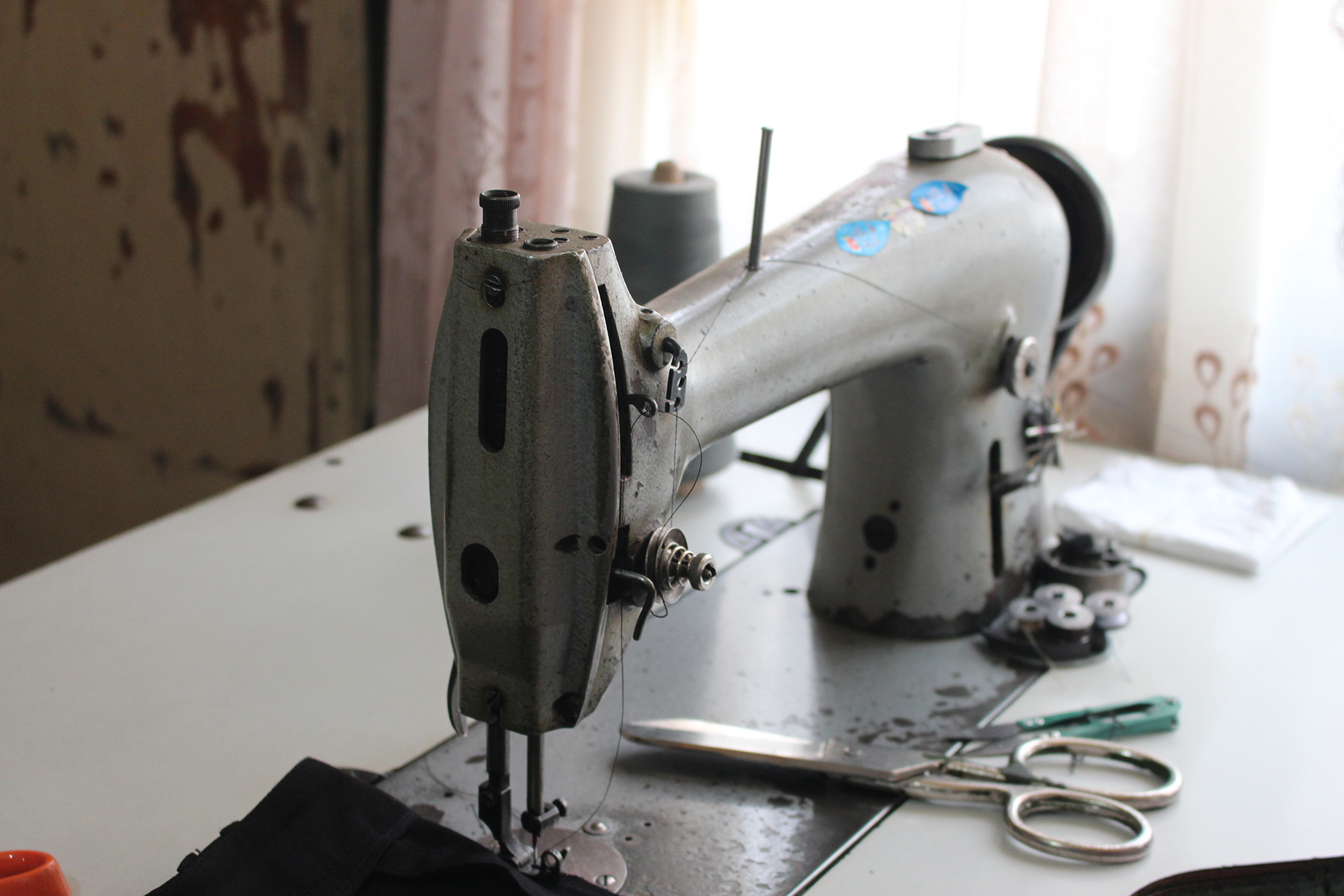
Finding a home
But she and her family did not make it through the earthquake unscathed.
Volodya’s house was one of the casualties of the disaster. Since its collapse, the couple has lived in a small space that was once a kitchen — one of the few parts of their home that did not fall, as it was at a distance from the main house.
In the centre of Gyumri, just behind the Cathedral of the Holy Mother of God, their kitchen-turned-home spans only 35 square metres.
Just big enough for two people, their main living area, which also functions as Galstyan’s workshop, includes a bed, a few chairs, a small table, a TV, and a fridge nestled tightly to use all available space. Haykuhi’s sewing machine takes pride of place, positioned under a window to make use of all available sunlight.
The bathroom and kitchen are squeezed into what room remains — a dilapidated shower and toilet tucked behind a curtain, and a small sink and crumbling shelf serve as a kitchen.
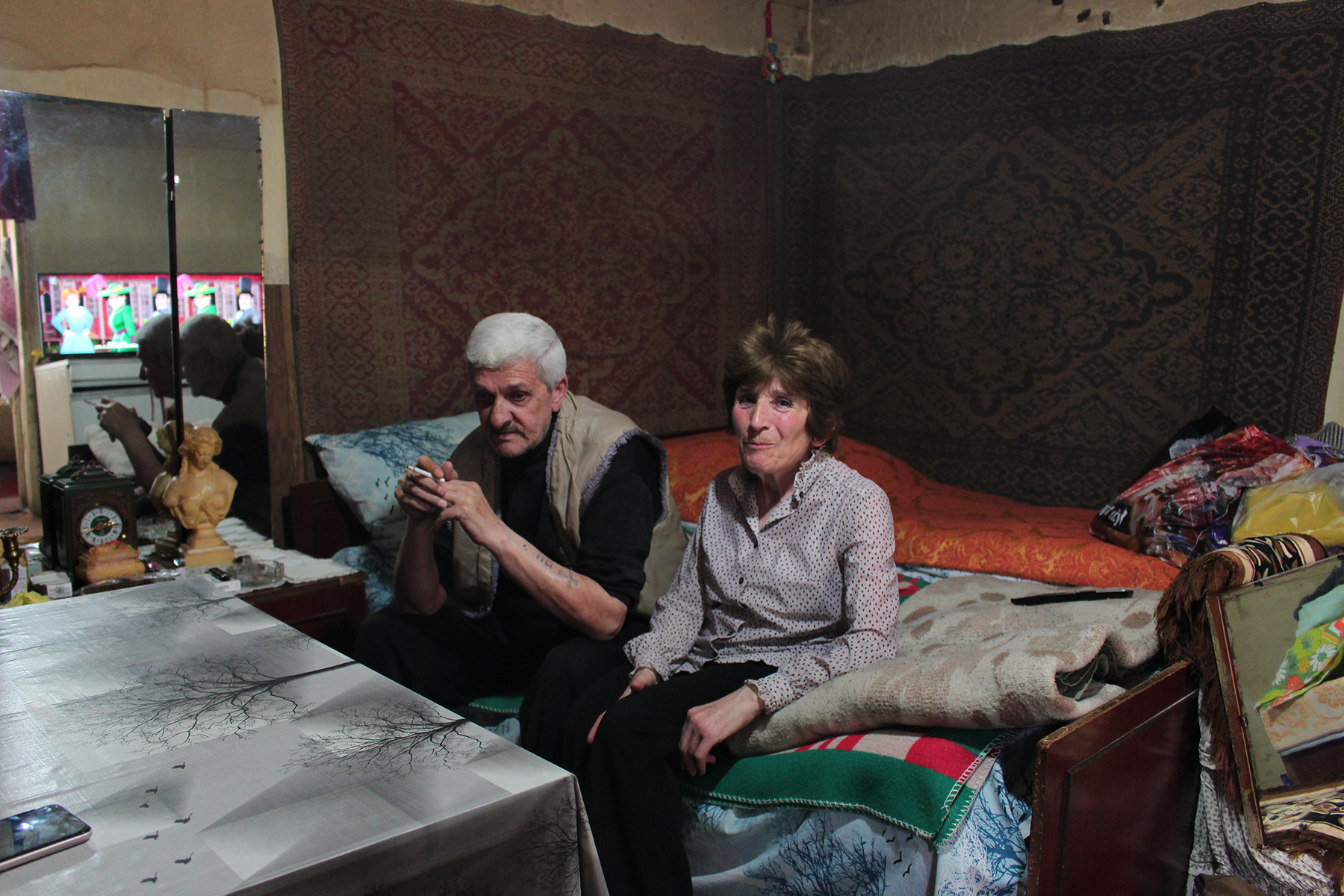
But even though the building has served as their home for the past 30 years, it remains a precarious place to live.
With their small home perched above a stream, there is a constant risk that further seismic activity could lead to the loss of all that Haykuhi and Volodya have left. The danger is very real — in 1999, their neighbour’s garage collapsed. While no one was hurt, the structure was demolished, and their car left adrift in the river.
‘After the earthquake, this house was not fit for living… We slowly turned this building into a home’, says Galstyan. ‘We are people who have lost everything. What would we have left if our home collapses?’
A slow recovery
Such conditions are not a rarity in Gyumri. Official figures from Gyumri Municipality suggest that there are currently 2,756 makeshift shelters in the region, most inhabited by people left homeless by the earthquake.
German and Italian NGOs built emergency housing as part of a rapid humanitarian response immediately after the disaster. They were intended to house people for a maximum of five years, and yet 30 years later, many people continue to occupy these temporary shelters, patching up fragile structures that are increasingly unlivable.
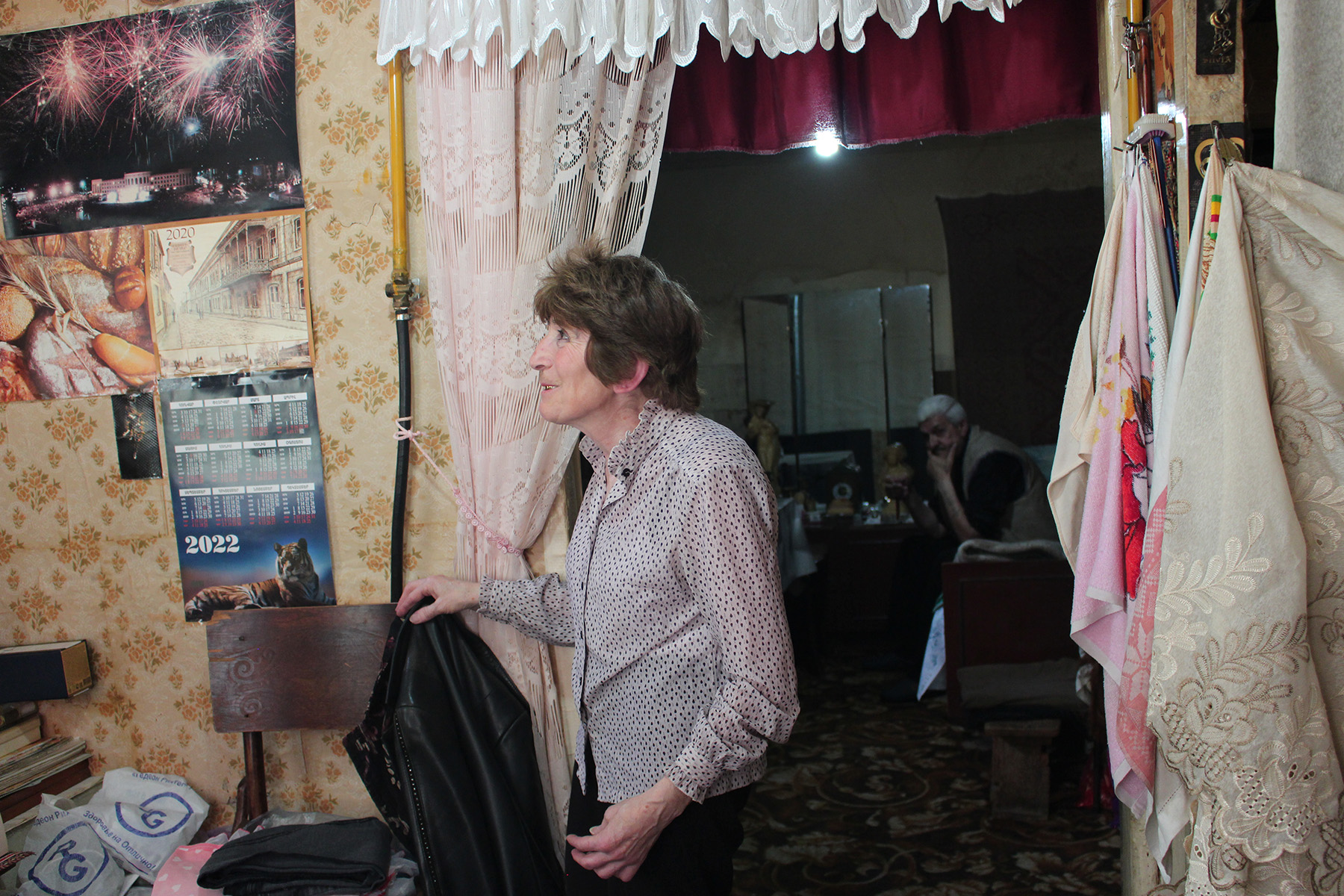
While support from international donors flooded in following the 1988 earthquake and government programmes were launched to rebuild the area, the dissolution of the Soviet Union in 1991 disrupted much of this work.
Foundations were laid, ready for new homes for the thousands who had been left without shelter, but those buildings failed to materialise amidst the social and political upheaval of the period.
In 2008, then-President Serzh Sargsyan promised to fully rebuild the region and rehouse its homeless by 2012, but ten years later, that promise remains unfulfilled.
Left reeling by the unprecedented natural disaster, the region’s economy suffered. Previously a bustling industrial hub, Gyumri and the surrounding province of Shirak fell into destitution. Since 1988, the province has consistently been one of the poorest regions in Armenia, with over 45% of the population living in poverty in 2020, according to the state statistics service. The city’s population has fallen by almost half, as its people have emigrated in search of employment and better lives.
Making ends meet
For those that have stayed, opportunities are few and far between. While new accommodation does exist in Gyumri, rents are inaccessible to those struggling to make ends meet while living in unsafe conditions.
[Read more on OC Media: Armenia’s devastating earthquake 30 years on]
This is certainly the case for Galstyan, who supports herself and her husband. Volodya was previously a tailor, but stopped working in 1974 and has only done occasional odd jobs since. As a result of health issues, he now spends most of his time at home.
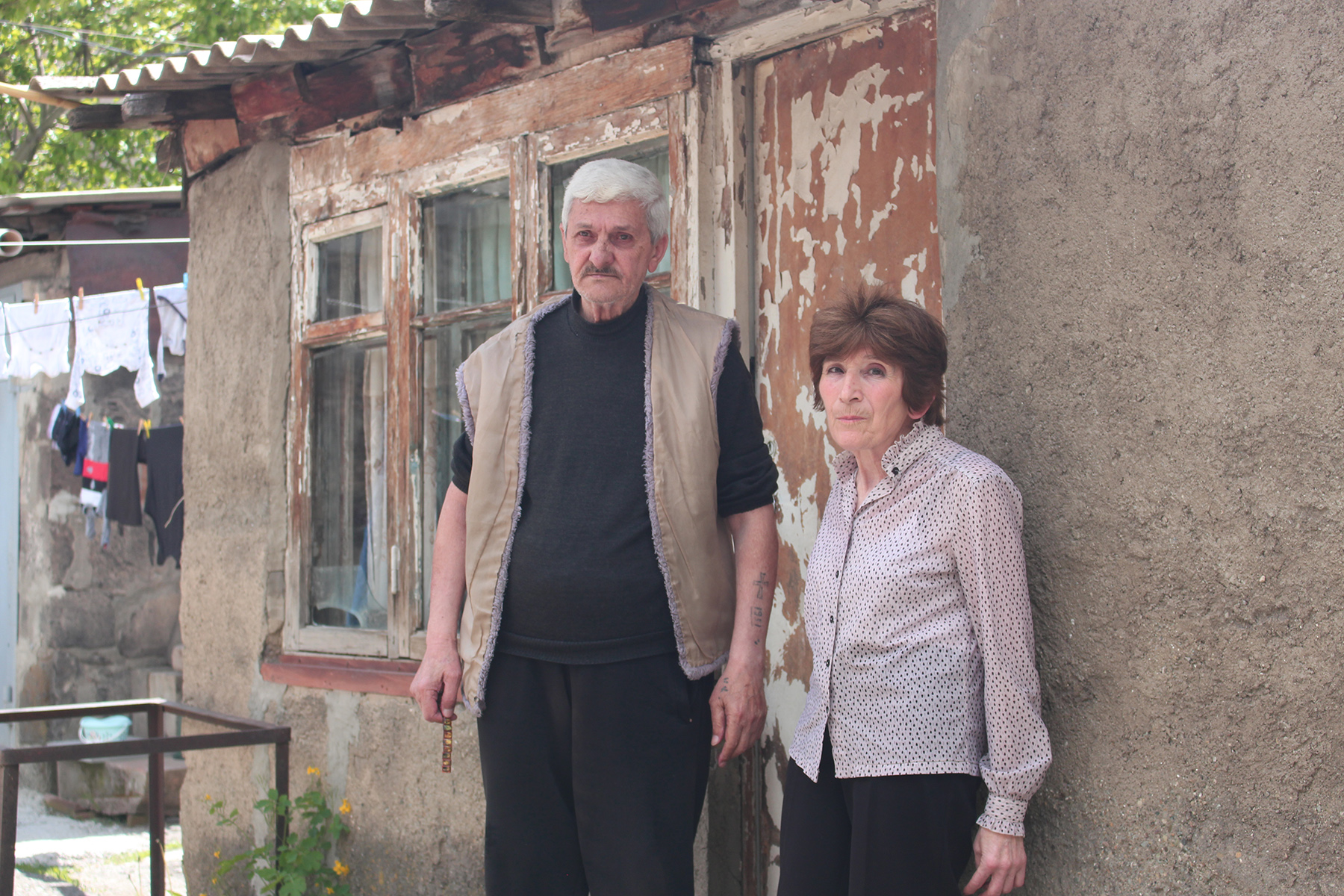
But if the work ever takes a toll on Galstyan, she doesn’t let it show.
‘I’m used to working by myself’, says Galstyan, ‘and I never get tired of sewing. There were times when I used to work until two or three in the morning and never felt exhausted’.
She says she has a huge base of loyal clients, some of whom have been with her since before the earthquake. Some live outside of Gyumri, others outside the country, but Haykuhi has clients at her door almost every day.
While she used to produce full outfits, these days it’s mostly repair work that sustains her and Volodya; the couple doesn’t receive any financial support from the government or NGOs.
They say they were offered support by the Gyumri municipality a couple of times but rejected it, saying that other people might need it more.
Hope for the future
While work to reconstruct Gyumri following the earthquake has been slow, it is still ongoing.
A government assistance programme that ran from 1989 to 2021 provided 5,419 families with new houses in that time.
Following the closure of that project, the Armenian government is developing a new programme for those remaining in need of help, which is expected to launch in 2023.
At a more local level, Gyumri Municipality works with a number of NGOs to provide homeless residents with flats. Between 2017 and 2020, 41 flats were built in collaboration with the Armenian Relief and Development Association (ARDA). Working with Ark, another Armenian NGO, 10 flats will be provided to homeless people from Gyumri in the near future.
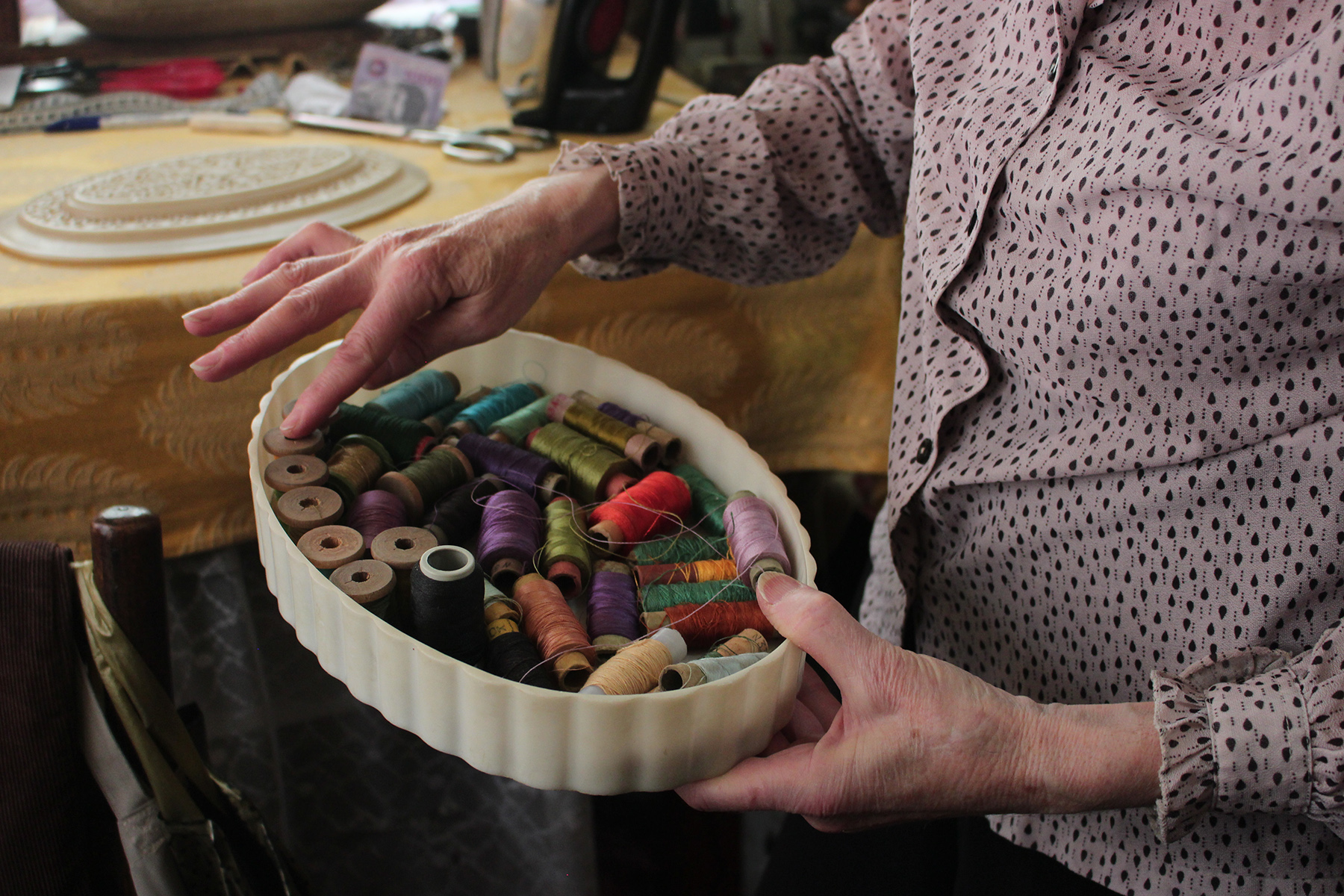
But Galstyan does not expect to move any time soon. Having lived through disaster, war, and political upheaval, she holds on to her work as one of the few constants, a source of pride and joy. She plans to work as a tailor for as long as she can.
‘It’s totally mine. Whatever I do, I do with a lot of love, and I believe everything is in the love you invest.’



